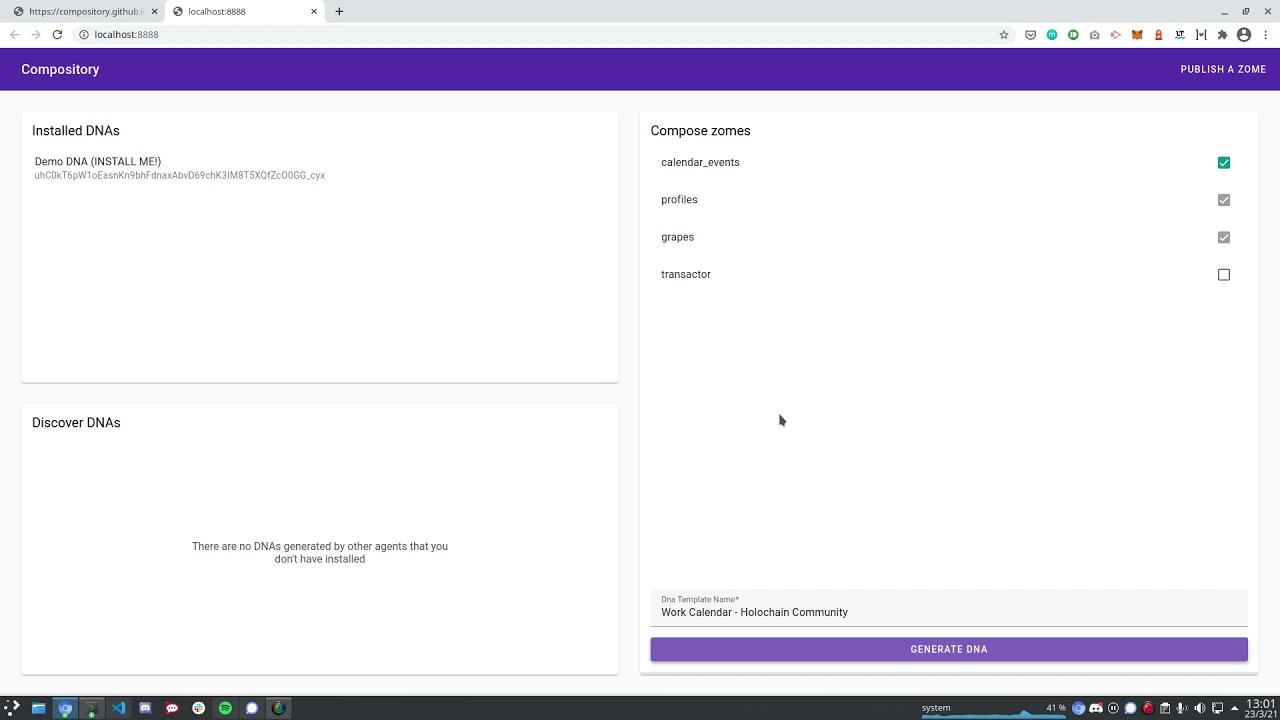Hi everyone! Hope you are all having some great holidays!
I want to share with everyone an experiment I’ve been playing with that excites me greatly. Here you can access it:
This is part of the new Low Code series that we are moving along in the holochain ecosystem.
I have to give credit for the name and ideas to @zippy and @artbrock, as the compository is a pattern that goes back to early Ceptr days when they needed a repository of protocols that can be composed together.
Well, in this holochain compository experiment, you can compose zomes together to create DNAs on the fly, and then compose UIs from the building blocks associated from those zomes.
For now, it requires you to have docker installed because of the usability problems in RSM that are being fixed by the core devs. If you don’t have code expertise, in the compository page there are steps to help you along, if you are not able to run it on your machine reach us to me.
Here is a guide on how to publish your own zomes to the compository. If anyone wants some help on publishing the zomes I’m glad to talk!
At this stage, this is just an experiment and conversation starter. In the future, I have in mind to add cross-DNA entry sharing and display, inter-zome dependencies, multiple DNAs structures, DNA properties and membrane proofs… There are so so many possibilities I can’t wait to try them out.
What do you think? Is any of you excited to play with this in any way? 





